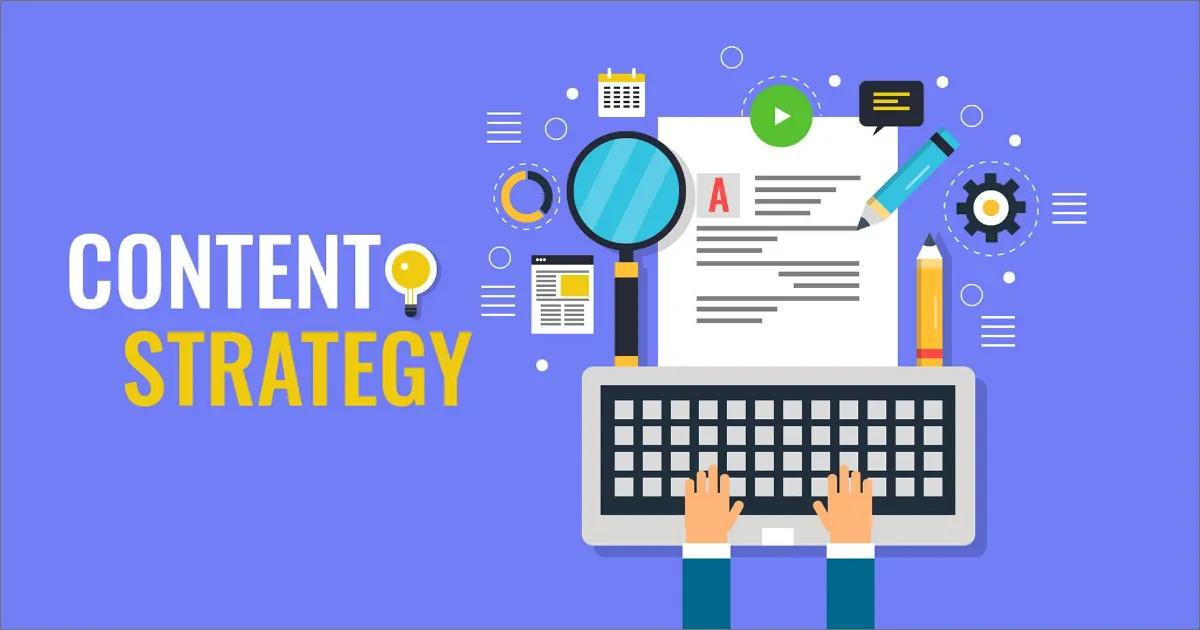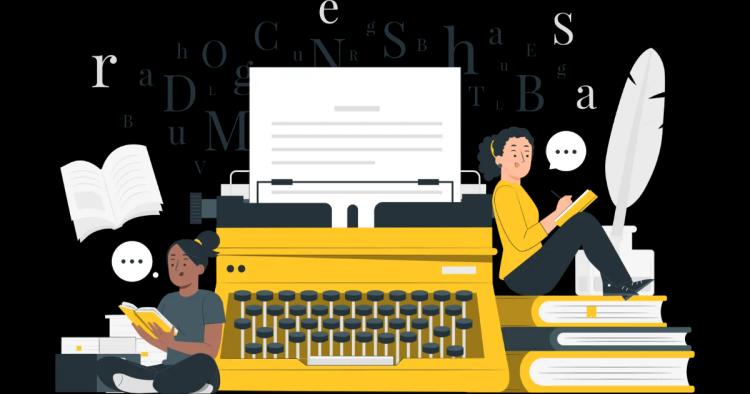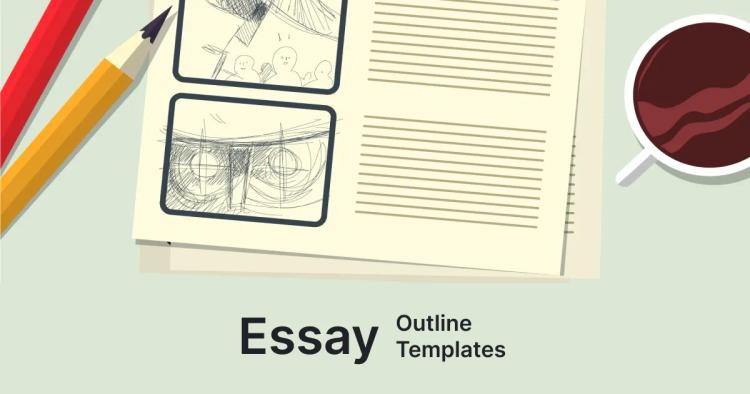In today's digital world, content marketing has become critical for organizations seeking to engage their audiences and drive conversions. On the other hand, creating content without a defined plan might result in an inconsistent message, lost resources, and bad outcomes.
As a result, creating a content strategy is essential to the success of any content marketing effort.
In this detailed guide, we'll lead you through the seven critical stages of building a content strategy that connects with your company goals and resonates with your target audience.
Whether you're an experienced marketer or new to content marketing, this blog will provide you with the information and tools you need to develop a successful content strategy from start to end.
So, let's start and discover how to create a content strategy to help your company succeed in the digital arena.

What is the Definition of Content Strategy?
The process of designing, developing, distributing, and managing information to meet specified corporate goals is known as content strategy.
It entails learning about your target audience, recognizing their wants and interests, and developing content that speaks to them.
Content strategy is an important component of any marketing campaign since it can help you achieve various goals, such as improving brand recognition, generating leads, driving traffic to your website, and increasing sales.
Do you want to raise brand awareness? Using an SEO-focused content strategy will help with that! Pay attention to developing high-quality content early in your business's life cycle.
It establishes trust with new audiences and positions you for long-term success.
In the inbound marketing structure, a solid content strategy is a foundation for your Attract and Delight stages. It aids in attracting prospects to your brand and facilitating sales enablement and customer satisfaction.
To compete in your business, you must build a robust content strategy, with 70% of marketers currently spending on content marketing. So where do you begin? These are some crucial questions to think about:

Who are you creating content for?
Identifying your target audience(s) is critical to personalize your content to their demands. Use a range of content formats and channels to appeal to each character.
What problem(s) are you addressing for your target audience(s)?
As people attempt to address their problems, your material should educate and coach them. It strengthens your answers and increases your credibility with your target audience.
What distinguishes you?
To differentiate yourself from the competition, emphasize what makes you unique or superior. Demonstrate why you're worth buying from and paying attention to.
What content types are you planning to use?
Please get to know your audience and meet them where they are. Choose the appropriate formats for your target audience before developing a budget for your strategy.
What platforms will you use to publish?
Distribute your material on channels where your target audience hangs out. This might be your website or social media channels like YouTube or TikTok.
How will you handle content production and publication?
Determine who is developing what, where it is published, and when it will go live.
Organize information by subject to avoid clutter and establish yourself as an authority in your field.
Are you ready to create your content strategy? Let's get started with the first seven steps.
The 7 Steps to Creating a Content Strategy

Define Your Objectives
The first step in building a content strategy is to define your goals. Your objectives should be explicit, quantifiable, attainable, timely, and relevant (SMART).
For example, if your objective is to boost website traffic, you may establish a precise target, such as increasing website visits by 50% over the following six months.
You may design a content strategy that corresponds with your company objectives and helps you reach your intended outcomes by outlining your goals.
Identify Your Customer Base
Understanding your target audience is essential for creating great content. It is best to determine their demographics, psychographics, and habits, as well as their interests, needs, pain spots, and preferred channels.
Understanding your target demographic will allow you to develop content that will resonate with them and drive engagement.
You may utilize technologies such as Google Analytics, social media analytics, surveys, and customer feedback to collect data about your audience.
Analyze the Content
A content audit involves assessing your existing material to determine what you have, what needs to be updated or repurposed, and what gaps exist.
A content audit helps ensure your material is current, relevant, and aligned with your company objectives.
To examine your content and discover areas for improvement, you may utilize tools like Google Search Console, Google Analytics, or other content audit tools.
Prepare a Content Plan
Create a content plan if you can determine your goals, target audience, and existing material. The sorts of content you will develop, the channels you will use to disseminate it, and the schedule for each piece of content should all be outlined in your content plan.
You should also outline your team members' roles and duties and design a content generation, review, and approval procedure.
Make a List of Potential Content
Content idea generation is an important aspect of building a content strategy. Here are some pointers and examples to help you generate content ideas:
How-To Guides
-
How-to guides walk you through solving common problems or completing specific tasks in your industry. These sorts of information are beneficial to readers seeking practical answers.
-
How-to guides may be created in various media, including blog posts, videos, and eBooks.
-
For instance, if you work in the culinary sector, you may write a how-to guide on meal preparation or baking skills.
Case Studies
-
Case studies show how your product or service helped your clients reach their goals in real life.
-
These forms of content are highly successful at establishing trust and credibility with your target audience. A well-written case study should be thorough and feature measurable outcomes.
-
For example, if you work in software, you might write a case study about how your software solution helped a client cut project completion time by half.
Product Evaluations
-
Product evaluations express your thoughts and feelings about products in your industry. These kinds of content assist you in establishing yourself as an authority while also providing value to your audience.
-
You can create Product assessments in various media, including blog entries, videos, and podcasts.
-
For example, if you work in the beauty sector, you might write a product review on the most recent skincare items on the market.
Interviews
-
Interviews feature industry professionals' or influencers' perspectives and ideas on relevant subjects.
-
These forms of content are beneficial to your audience since they get to learn from subject matter experts. You may record interviews in various media, including videos, podcasts, and blog articles.
-
If you work in marketing, you might interview a marketing professional about their best suggestions for establishing a successful marketing campaign.
Infographics
-
Infographics use graphic elements to present complex data or statistics about your industry. These materials successfully convert complex information into easily digestible visual stuff.
-
For example, if you work in healthcare, you might develop an infographic outlining the top health advantages of a specific food item.
Social Media Posting
-
Offering social media tips, jokes, and behind-the-scenes information to engage your audience and improve brand awareness is what social media posting entails.
-
Such type of content is quite efficient at attracting a large number of followers on social media networks.
-
If you work in the fitness business, you might provide social media advice on staying motivated during an exercise regimen.
Webinars
-
Webinars are live or recorded online events that provide in-depth knowledge and insights about your industry.
-
These forms of content are extremely successful at giving value to your audience and establishing you as a subject matter expert.
-
For example, if you work in finance, you may host a webinar on investment ideas for novices.
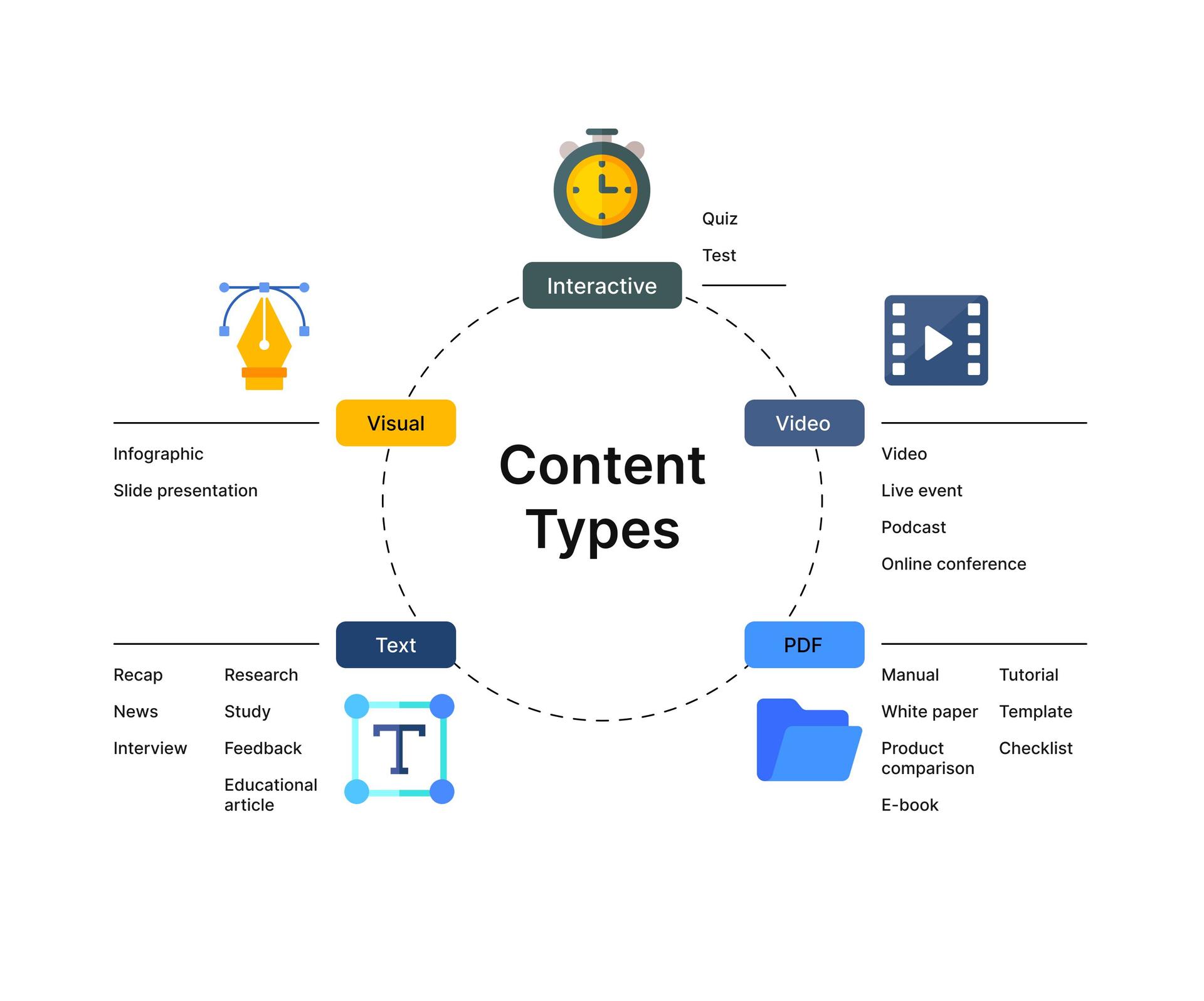
Content brainstorming is a creative and enjoyable exercise. Following these recommendations and examples, you can develop content ideas that will interest your audience and assist your content marketing goals.
Make and Curate Content
Generating high-quality, relevant, and engaging content that speaks to your intended audience is content creation and curation.
It would help if you generated various content types relevant to your audience's preferences and interests, such as blog articles, videos, infographics, social media postings, podcasts, and webinars.
You should also collect information from other sources, such as industry journals or thought leaders, to provide value to your audience.
Spread Your Content
Distribution of your content is advertising your content through the appropriate channels to connect with your intended audience.
Platforms such as social media, email campaigns, consumer promotions, or sponsored content should be chosen based on your audience's interests and behaviors.
You should also apply analytics to analyze the success of your distribution networks and improve your content for search engines.
Measure and Fine-tune Your Strategy
Evaluating and improving your plan is reviewing the effectiveness of your content marketing and making changes to improve your outcomes.
It would be best to use Analytics to track website traffic, social media engagement, conversion rates, and other relevant data to your goals. You should also do frequent content audits and improve your content strategy to ensure your material is current, relevant, and aligned with your company goals.
You can guarantee that your content marketing activities stay effective and productive by constantly updating your plan.
Why Marketers Must Have a Content Marketing Plan
Developing a content marketing strategy is critical for marketers because it allows them to reach their objectives more effectively.
With a vision, marketers can save time and dollars developing content that may resonate with their target audience or achieve their business objectives.

A well-planned content strategy can assist marketers in the following ways:
Boost Brand Awareness
- You can increase brand recognition and position your business as a thought leader by providing high-quality content that appeals to your audience.
Create Leads
- Content marketing can enable you to draw in and convert leads by offering relevant content that helps your customers solve problems or satisfy their demands.
Increase Website Traffic
- By developing and distributing high-quality content, you could improve your website's exposure and enhance your search engine results.
Increase Sales
- Increase sales and income by producing content that speaks to your audience's issues and promotes your good or service as the answer.
Content Strategy Template
A content strategy template is a document that can support the planning and management of your content marketing initiatives.
It gives a framework for creating a content strategy that aligns with your company's aims and target audience.
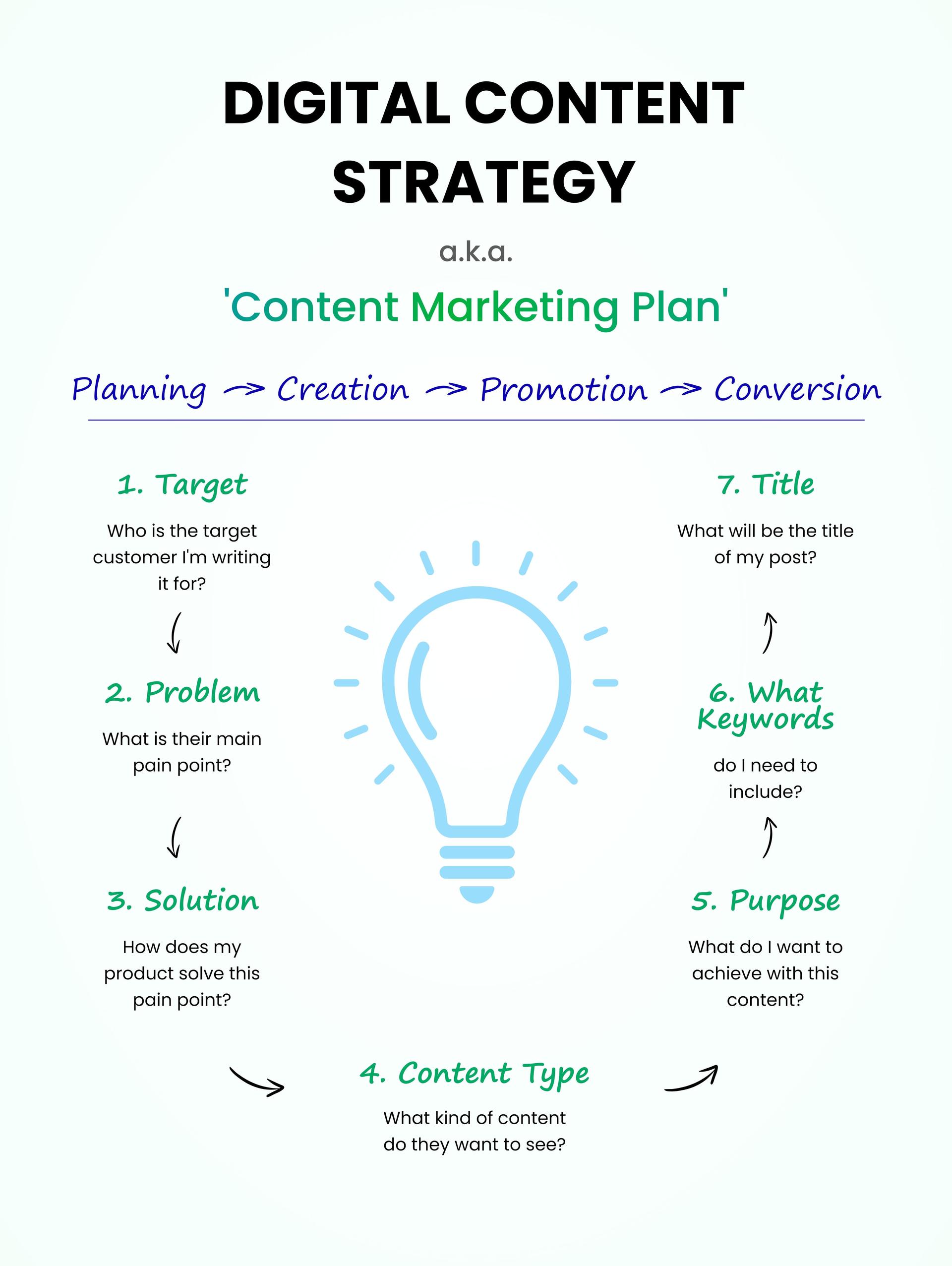
A typical content strategy template comprises the following sections:
The Executive Summary
- This section summarizes your content strategy, including goals, target audience, and core points.
Goals for the Business.
-
This section describes your company's objectives and how your content strategy will assist you in reaching them.
-
Your objectives should be explicit, measurable, realistic, timely, and noteworthy (SMART).
The Intended Audience
-
This section provides information on your target audience's demographics, psychographics, and habits.
-
It would help if you learned about their hobbies, requirements, pain areas, and preferred communication routes.
The Brand's Voice
- This section describes your brand's voice and tone, as well as its personality, messaging, and style. Your brand voice should be consistent across all platforms of content.
Content Varieties
-
This section describes the material you will produce, including blog entries, videos, infographics, social media postings, podcasts, and webinars.
-
You should select content categories that correspond to the tastes and interests of your target audience.
Content Areas
-
This section specifies the themes you will address in your content based on your target audience's interests, requirements, and pain points.
-
While choosing themes, consider industry trends, keywords, and search engine optimization (SEO).
Content Timeline
-
This section defines your content strategy, including the distribution channels you will incorporate and the schedule for each piece of content.
-
Also, you should design a procedure for content production, review, and approval, as well as the roles and duties of each team member.
Metrics
-
The metrics you'll use to gauge the success of your content strategy are listed in this section.
-
Examples include website traffic, social media engagement, conversion rates, and other metrics that support your objectives.
Budget
- This section details your content marketing budget, which includes the costs of content development, delivery, and promotion.
A content strategy template may assist you in developing a complete and successful content strategy that promotes engagement and meets your goals.
Employing a template guarantees that your content strategy is structured, actionable, and aligned with your company goals.
Content Marketing Strategy Examples
Inbound Marketing Strategy at HubSpot
HubSpot is a pioneer in the development of inbound marketing tools and services. Their content marketing approach offers their target audience excellent tools and information, such as blog articles, webinars, e-books, and templates.
This strategy has assisted them in establishing themselves as thought leaders in the inbound marketing field and generating leads for their products and services.
Red Bull's Branded Content Strategy
Red Bull is a well-known energy drink manufacturer.
On the other hand, their content marketing approach focuses on generating and distributing high-quality branded material, including videos, documentaries, and events, that connect with the interests of their potential customers in extreme sports and adventure.
This strategy has helped them gain a devoted following and raise brand recognition.
The Viral Video Strategy of Dollar Shave Club
Dollar Shave Club is a razor and personal grooming goods subscription service. Their content marketing strategy is developing viral films highlighting their goods' unique features and benefits.
This strategy has assisted them in increasing brand recognition and attracting new consumers via social media and other channels.
Conclusion
Finally, building a content strategy is crucial to attaining your business objectives through focused and successful marketing activities.
You can develop and distribute high-quality content that connects with your target audience, promotes engagement, and accomplishes your targeted goals by following the seven stages in this article and learning from successful content marketing campaigns.

